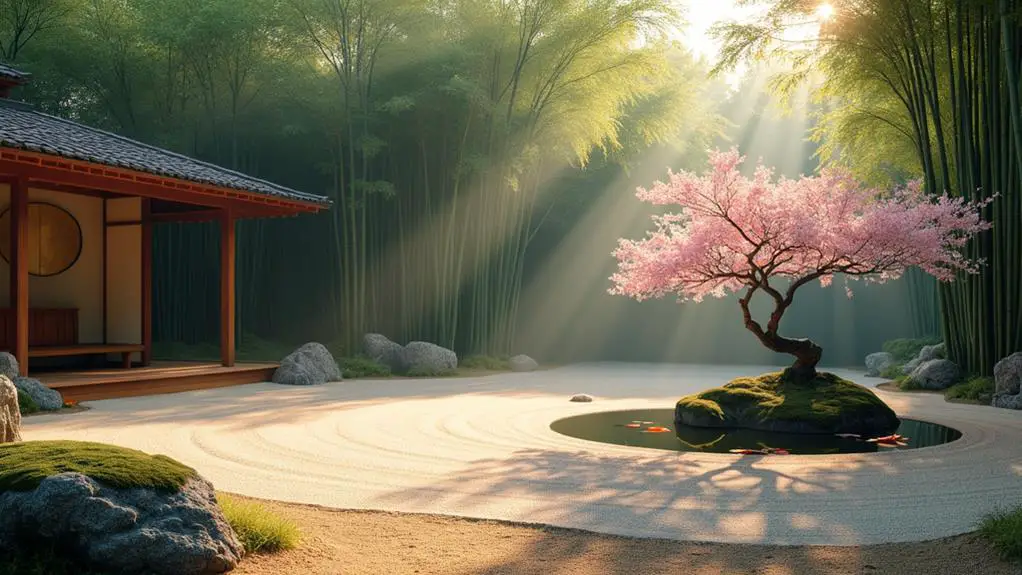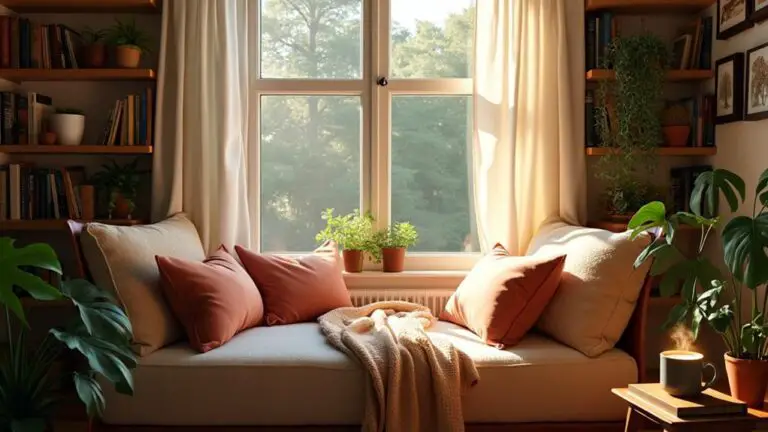Zen Garden Serenity: Japanese-Inspired Minimalist Designs
I've discovered that Zen gardens, rooted in Japanese minimalist design, offer a powerful way to create serene, contemplative spaces in any environment. These gardens emphasize balance and harmony through carefully arranged elements like rocks, gravel, and plants. They utilize negative space, asymmetrical layouts, and natural materials to foster tranquility and reflection. Water features add soothing sounds, enhancing the calm atmosphere. The simplicity in design, with its focus on essential elements and earth tones, reduces visual clutter and encourages mindfulness. By incorporating these principles, you can transform your outdoor space into a peaceful retreat that promotes relaxation and inner peace. There's so much more to explore in the world of Zen garden design.
What To Know
- Zen gardens emphasize balance and harmony through carefully arranged rocks, gravel, and minimalist plant selections.
- Natural materials like bamboo, stone, and untreated wood create a cohesive environment reflecting Zen principles.
- Negative space and asymmetrical arrangements promote tranquility and natural flow in garden design.
- Simplicity is paramount, focusing on essential elements and earth-tone color palettes to reduce visual clutter.
- Water features introduce soothing sounds and serve as focal points, enhancing the overall sensory experience of serenity.
Harmonious Elements
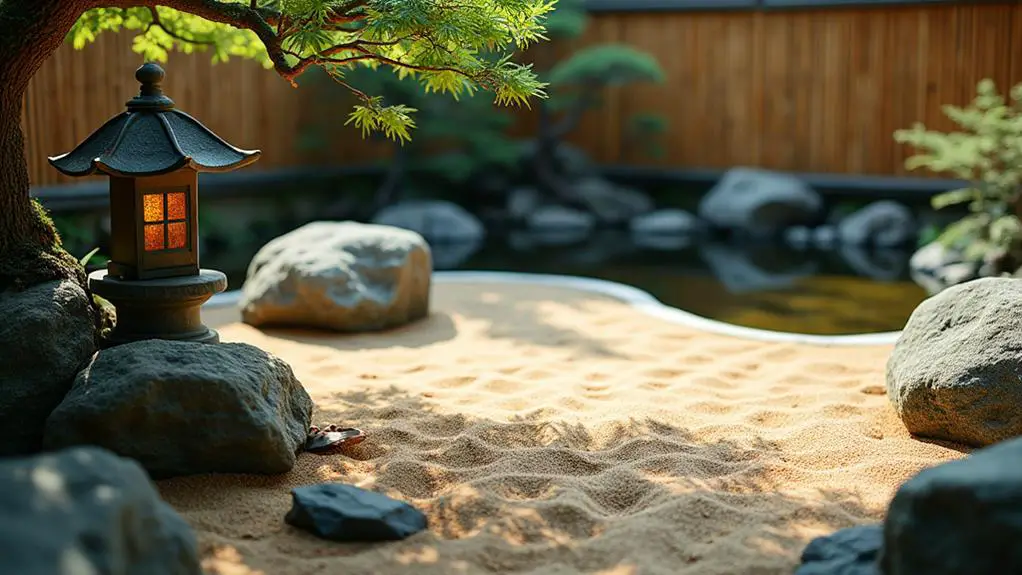
While exploring Japanese-inspired minimalist designs, I've found that harmonious elements play an essential role in creating tranquil spaces. In a Zen garden, I've observed how carefully arranged rocks and gravel symbolize natural landscapes, establishing balance and harmony.
The minimalist design extends to plant selections, with bonsai trees and moss embodying resilience and simplicity.
I've noticed that water features, like small fountains or ponds, introduce soothing sounds that enhance the garden's sense of calm. Each element's strategic placement encourages contemplation, allowing me to engage deeply with my surroundings.
Natural materials are thoughtfully chosen to create a cohesive environment that embodies Zen principles.
What fascinates me most about Japanese Zen Gardens is how every component, from layout to material selection, contributes to the overall tranquility and promotes emotional well-being. It's a reflection of the power of harmonious design.
Mindful Space Planning
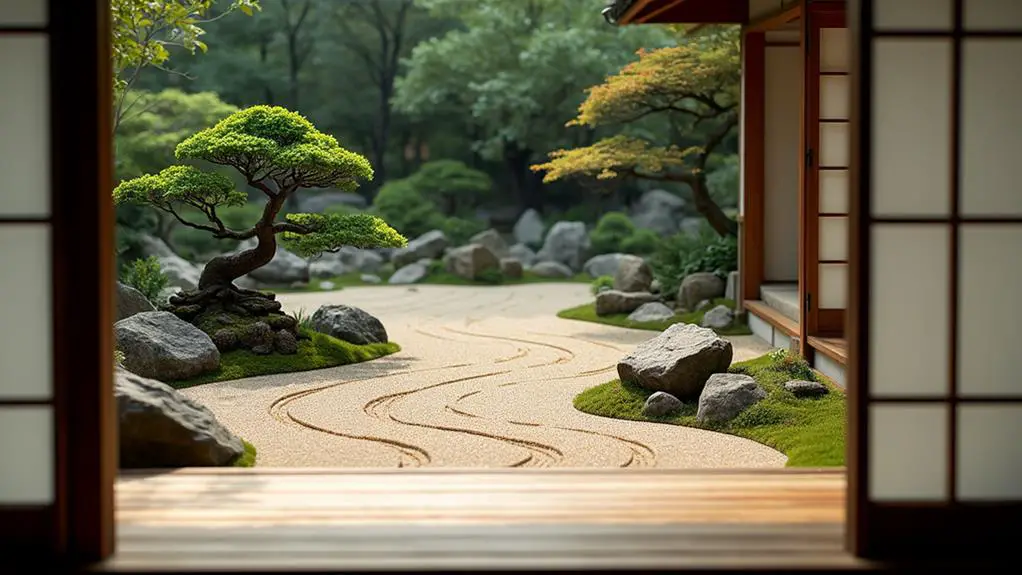
As I explore deeper into Japanese-inspired minimalist designs, I've come to appreciate the critical role of mindful space planning. In Zen garden ideas, I've discovered that emphasizing negative space creates intentional emptiness, promoting tranquility and balance.
I've learned to arrange key elements like rocks and plants with asymmetry, fostering a natural flow that encourages reflection.
I've found that incorporating pathways and seating areas strategically enhances accessibility while creating a harmonious space for meditation. By using natural materials such as wood and stone, I've established a stronger connection to the natural world, reinforcing the garden's serene atmosphere.
I've also considered seasonal changes in my space planning, allowing for adaptability and reflection of nature's cycles. This approach not only enhances the garden's aesthetic appeal but also invites ongoing engagement with the space throughout the year.
Natural Material Selection
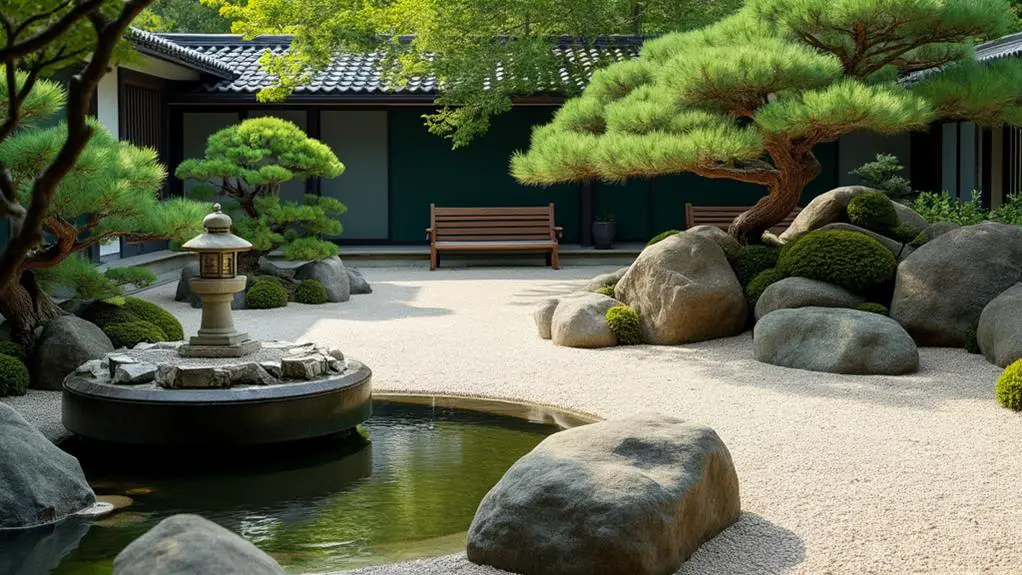
Building upon the principles of mindful space planning, I've found that selecting natural materials is key to creating an authentic Japanese-inspired minimalist design.
I prioritize elements like bamboo, stones, gravel, and untreated wood to foster a direct connection with nature and enhance tranquility. Bamboo's lightweight and flexible properties make it perfect for fencing and decorative elements, while its sustainable growth aligns with eco-friendly principles.
I use stones and gravel of varying sizes and textures to represent natural landscapes, symbolizing mountains, rivers, or the cosmos. Untreated wood for benches and pathways contributes to a rustic aesthetic that harmonizes with the garden's natural elements.
Simplicity in Design
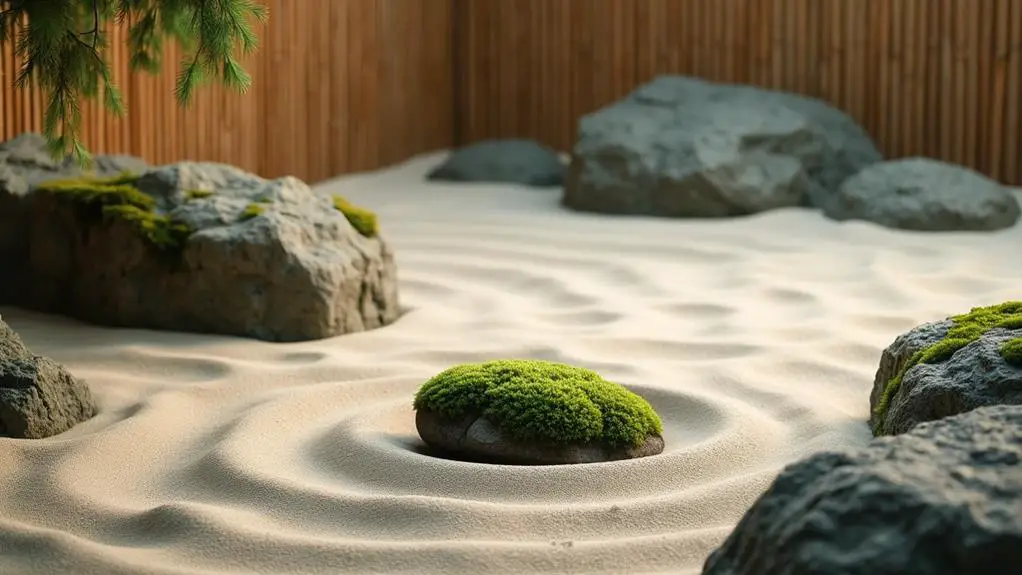
Throughout my exploration of Japanese-inspired minimalist designs, I've discovered that simplicity is the cornerstone of creating a truly tranquil space. In Zen gardens, I've observed how this simplicity manifests through a minimalist aesthetic that focuses on essential elements. By reducing visual clutter, these gardens promote a sense of tranquility that's hard to achieve elsewhere.
I'm particularly drawn to the way these design ideas incorporate natural materials like stone and wood, enhancing the connection to the natural world. The limited color palette of earth tones creates a soothing backdrop, allowing the essence of the design to shine through.
I've noticed how the strategic placement of rocks, gravel, and plants fosters a harmonious flow, embodying the principles of balance. The intentional use of open spaces further enhances calm, encouraging mindfulness and contemplation in these serene environments.
Tranquil Water Features
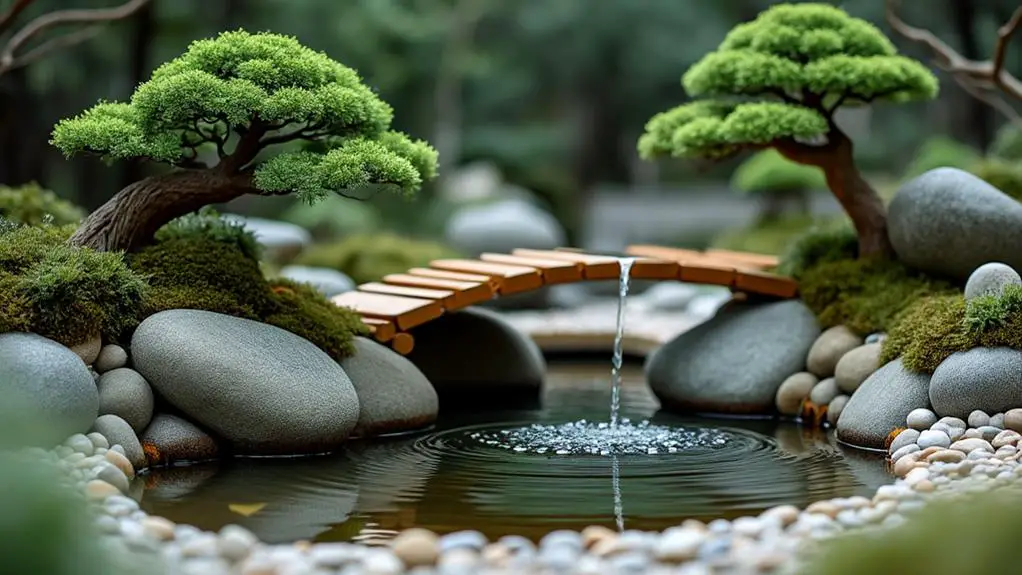
Three key elements define tranquil water features in Japanese-inspired minimalist designs.
First, they create a serene atmosphere through the gentle sound of flowing water, enhancing the ambiance of Zen gardens. I've found that strategically placed fountains or water bowls promote relaxation and mindfulness, making them ideal for meditation and contemplation.
Second, these features symbolize the interconnectedness of all things, reflecting Zen philosophy's core themes. I've observed how water elements serve as a powerful reminder of life's cyclical nature, encouraging introspection and deeper connections to the natural world.
Lastly, tranquil water features contribute to a holistic sensory experience. By incorporating them into quiet areas, I've noticed they provide calming visual focal points while fostering tranquility. This combination of auditory and visual elements enhances the overall aesthetic appeal, creating a truly immersive environment for reflection and inner peace.
Conclusion
I've poured my heart into creating the perfect Zen garden, meticulously arranging every rock and carefully raking each grain of sand. It's ironic, really. In my quest for serenity, I've become obsessed with every detail, losing sleep over the placement of a single pebble. Perhaps true peace lies not in achieving perfection, but in embracing imperfection. As I sit in my immaculate garden, I can't help but laugh at the chaos in my mind.

